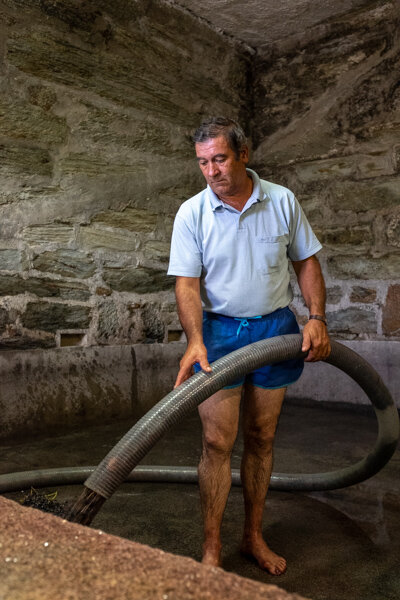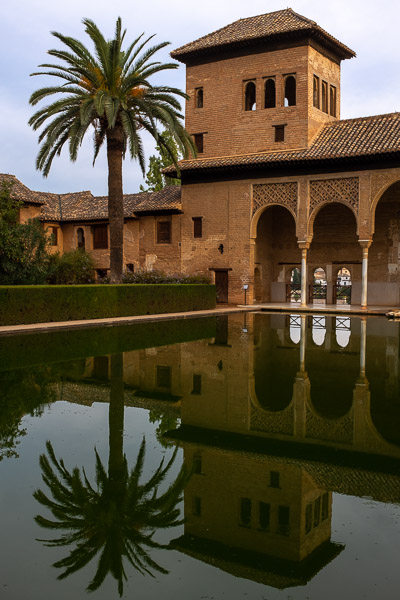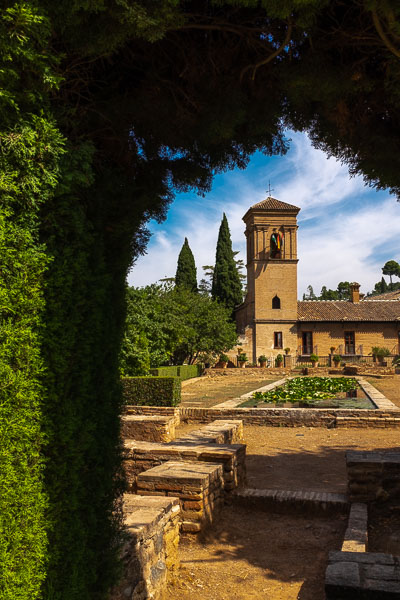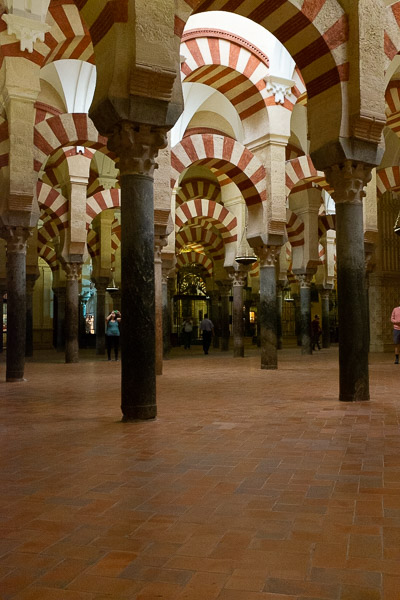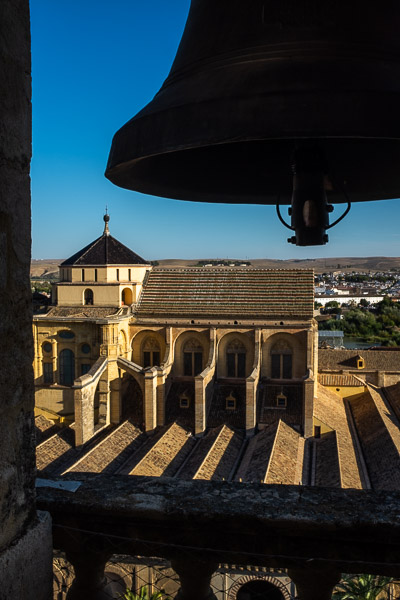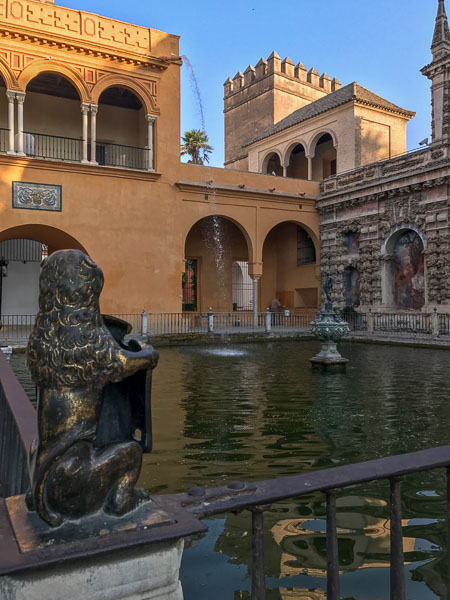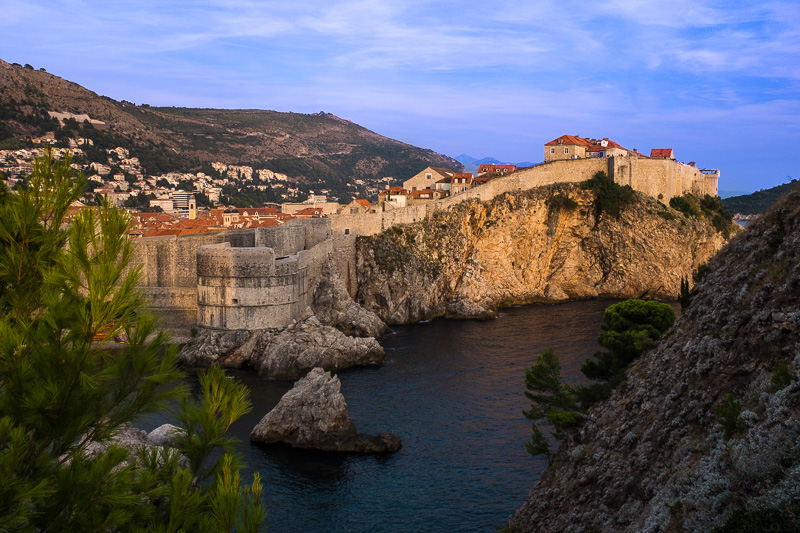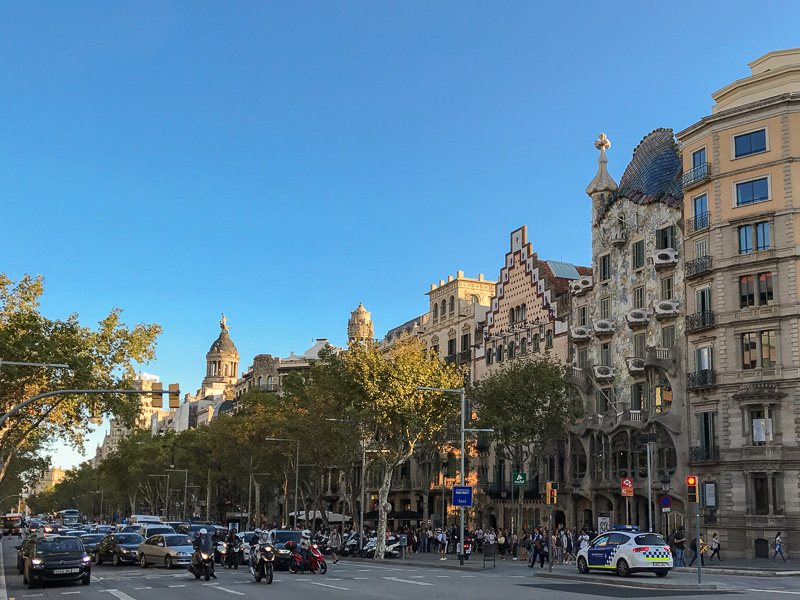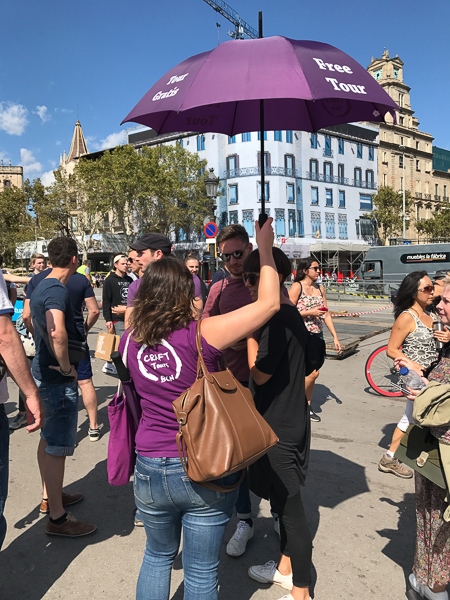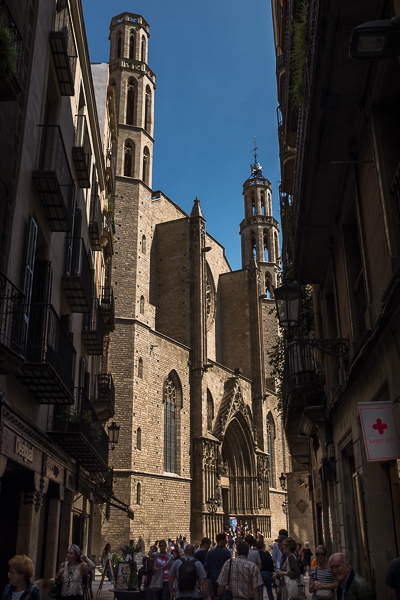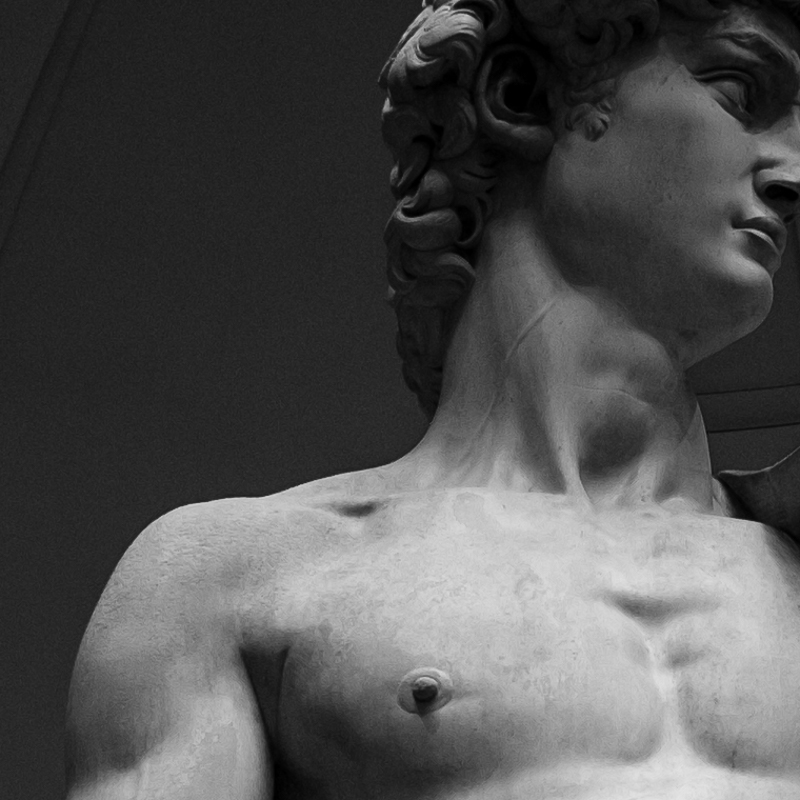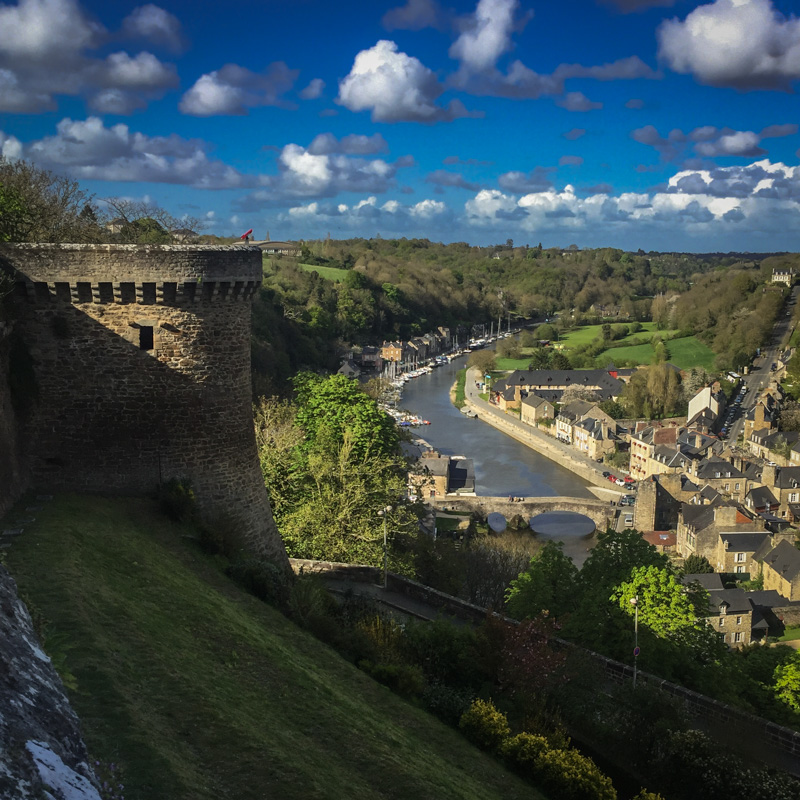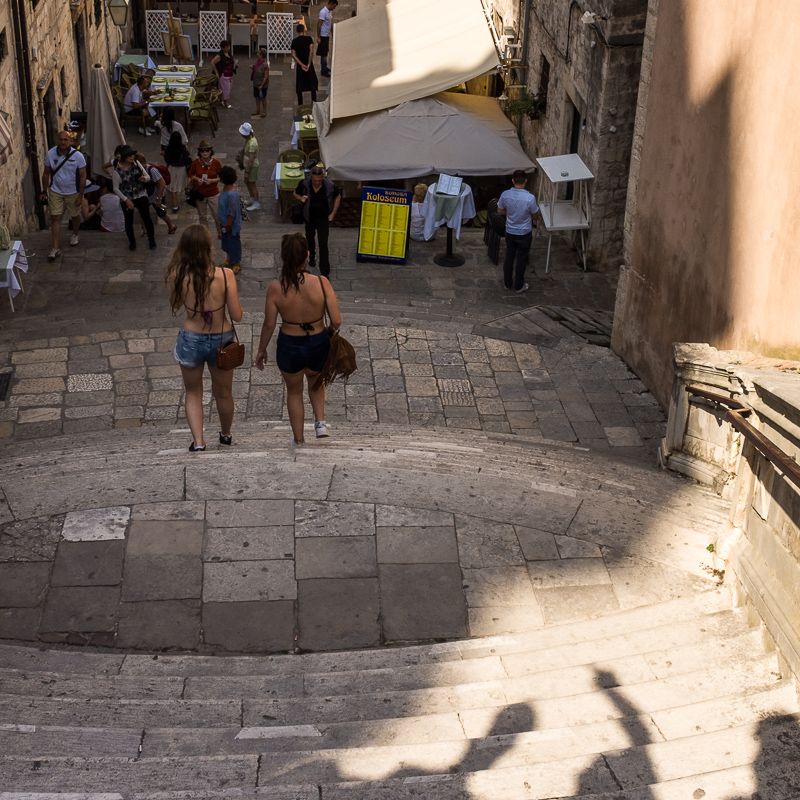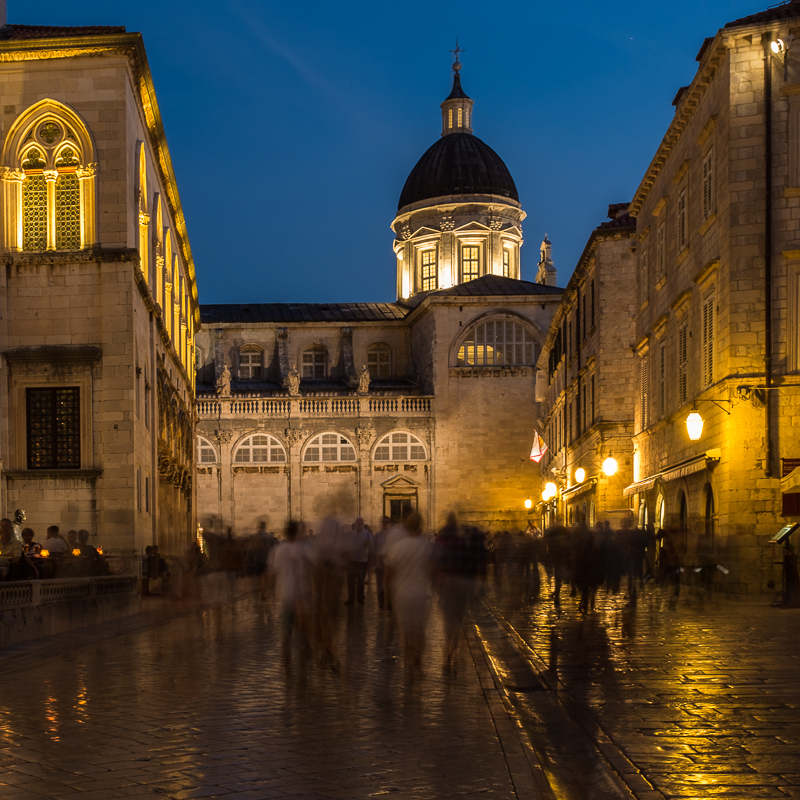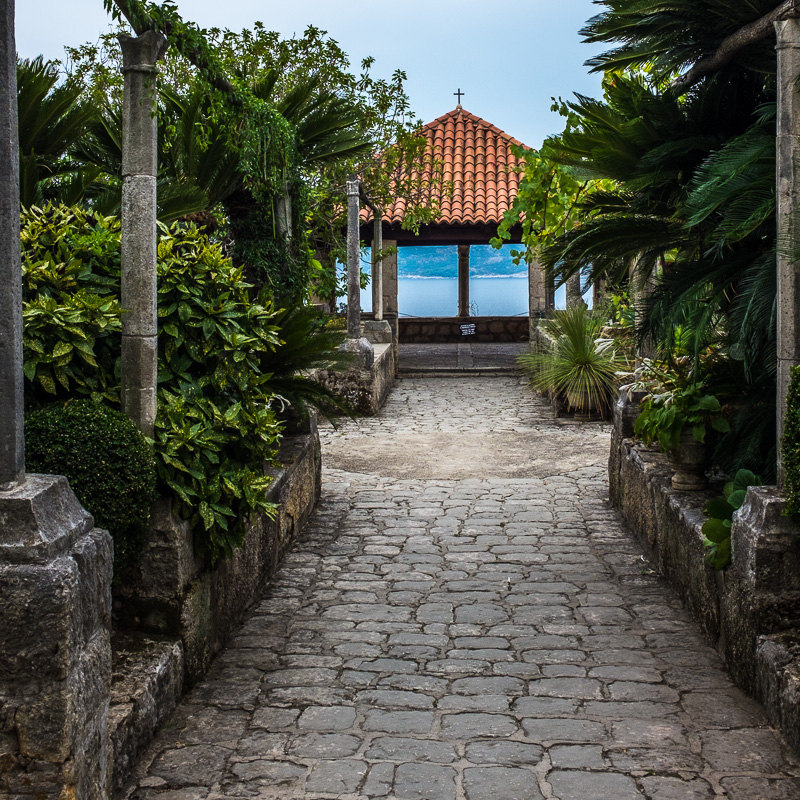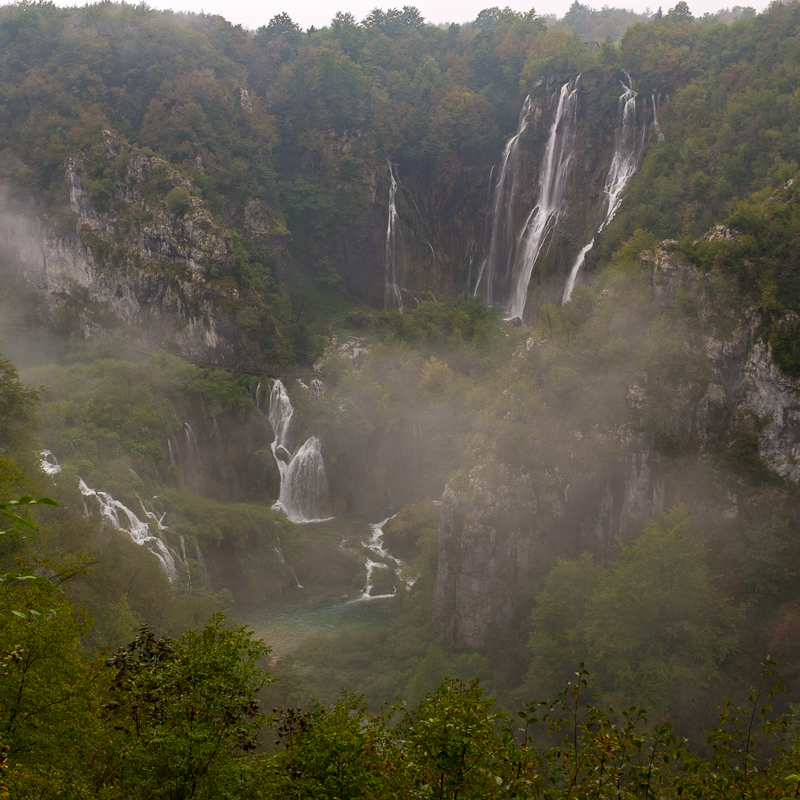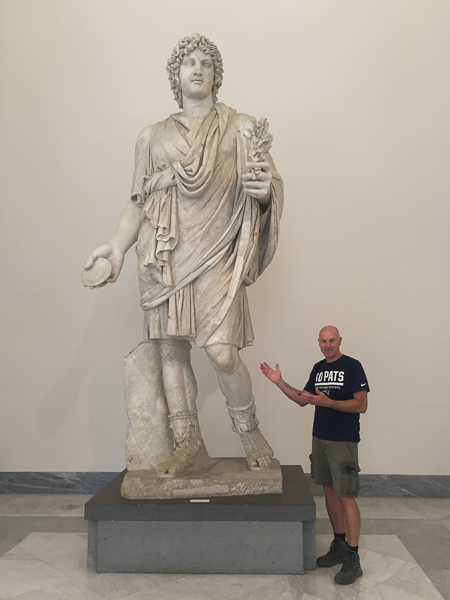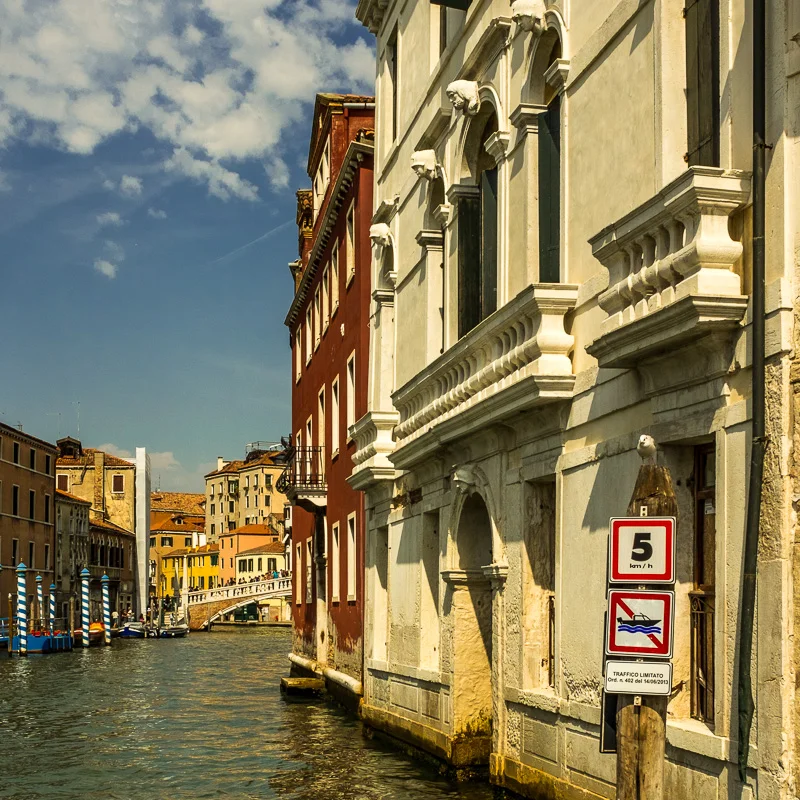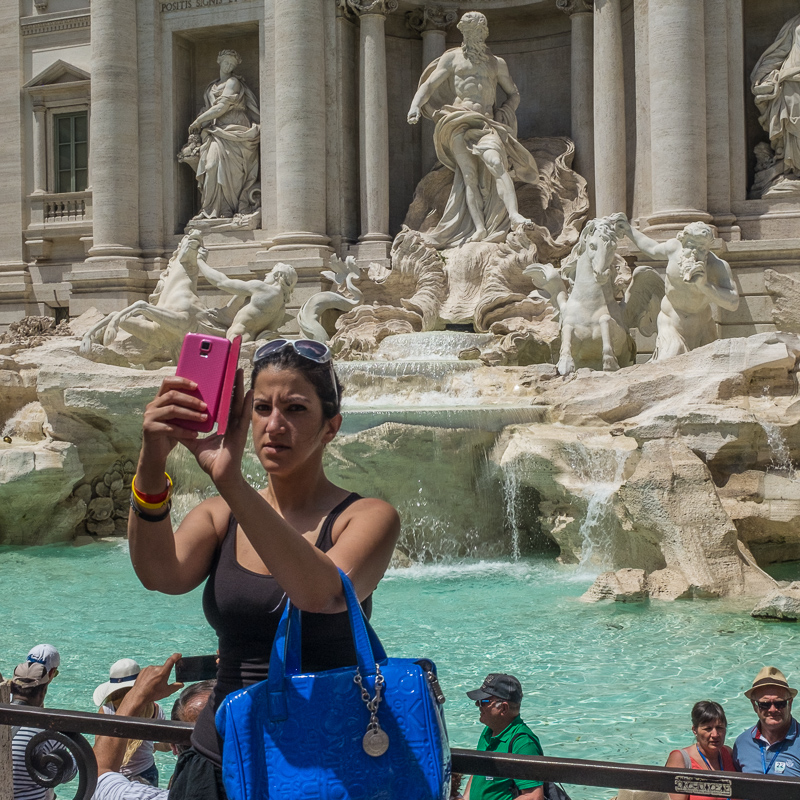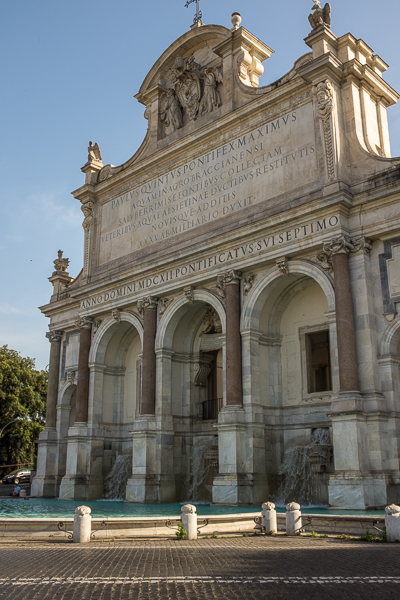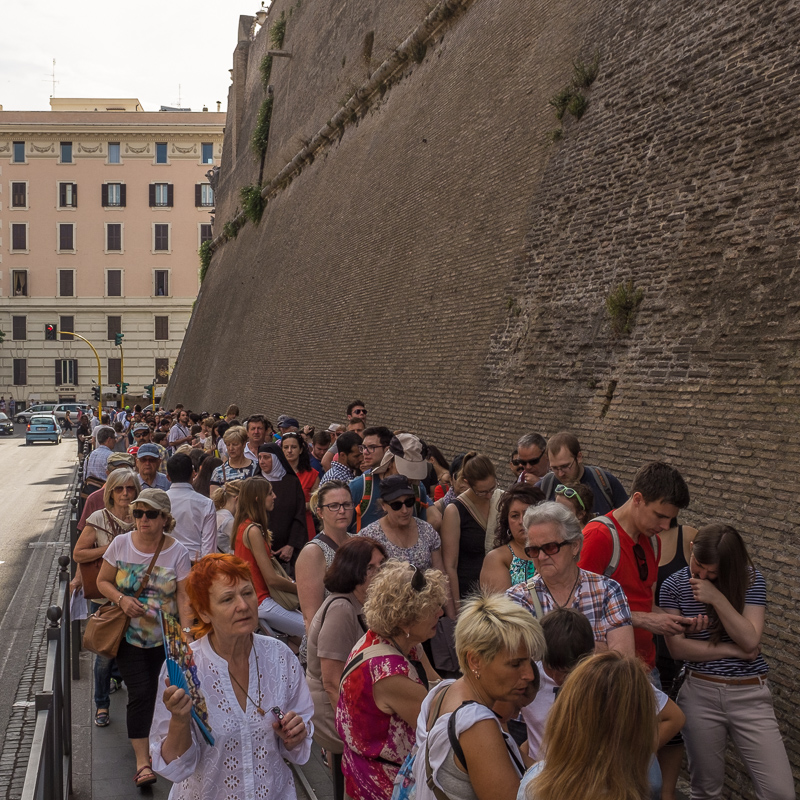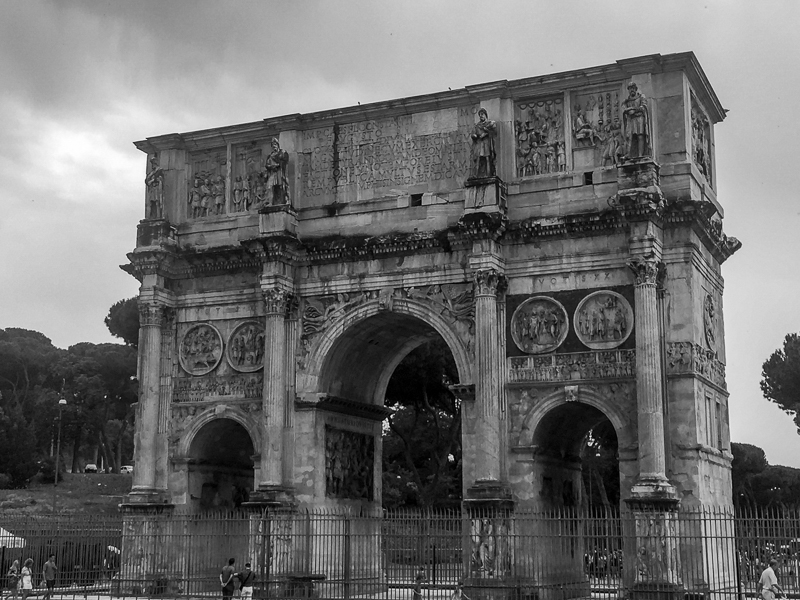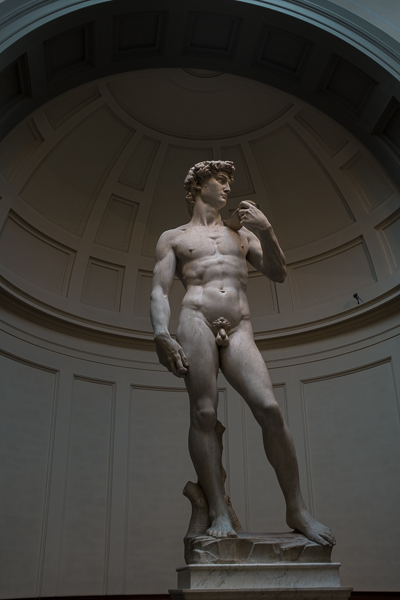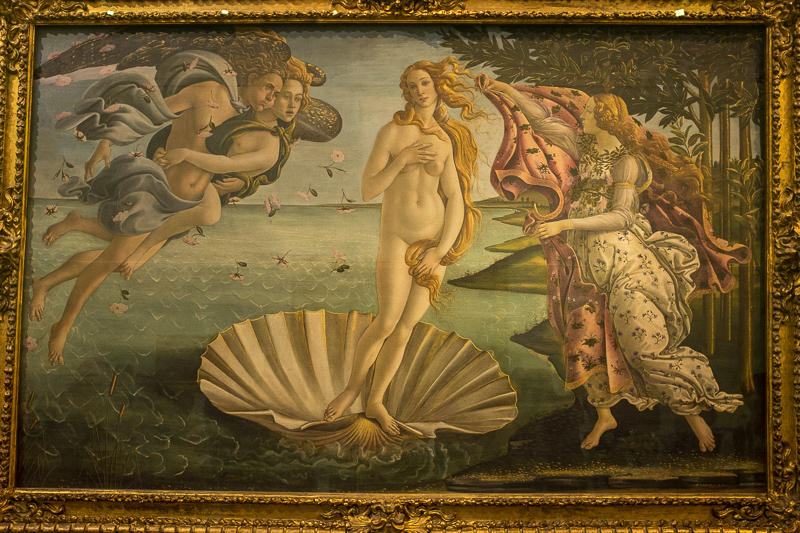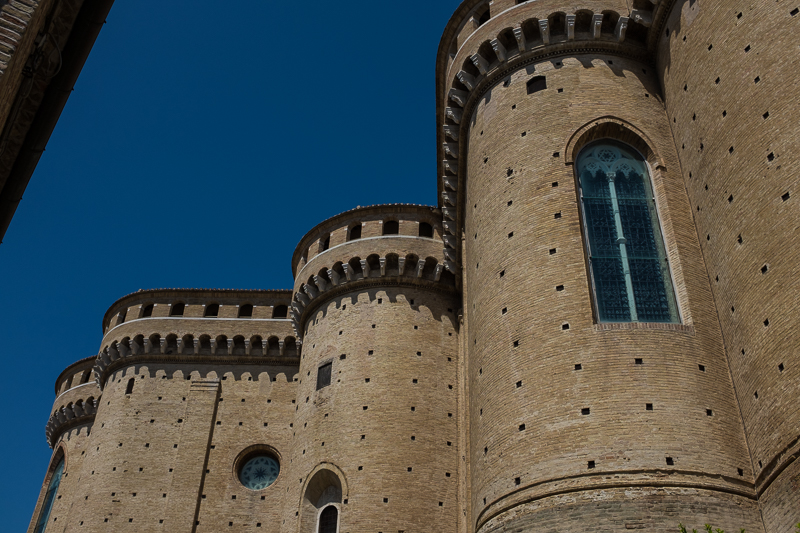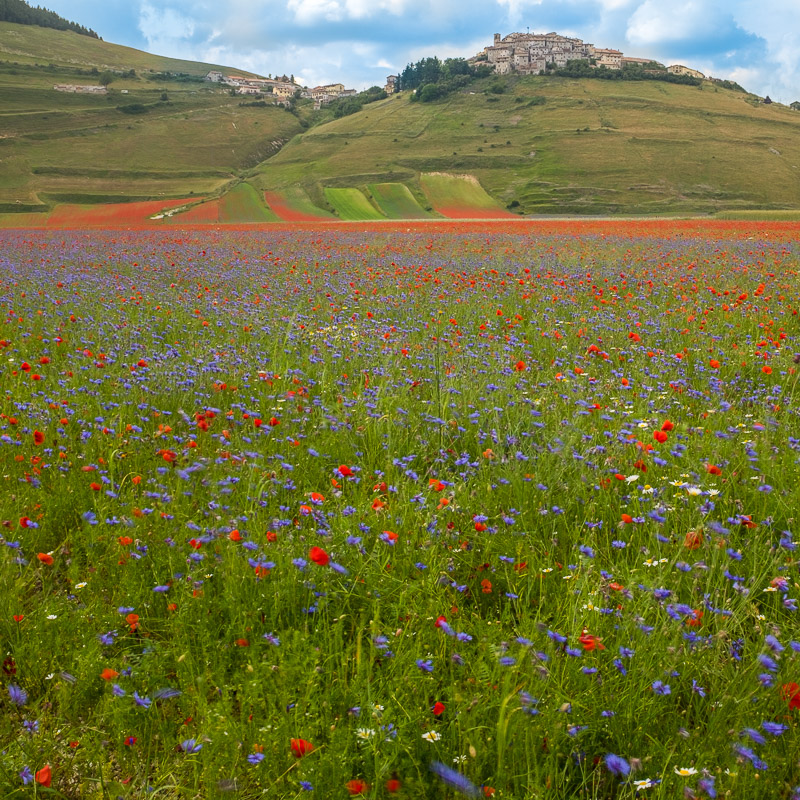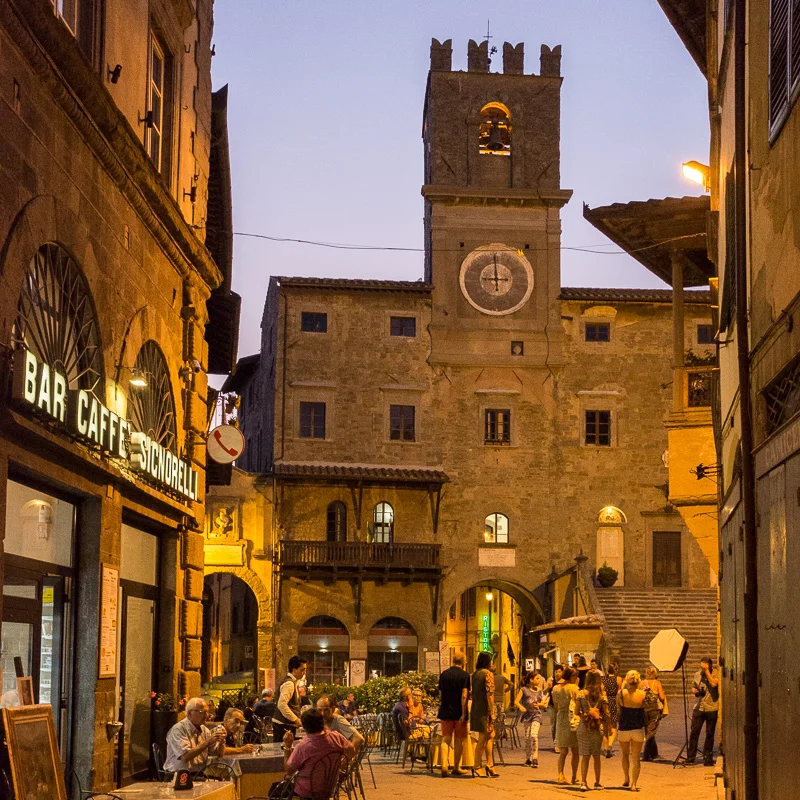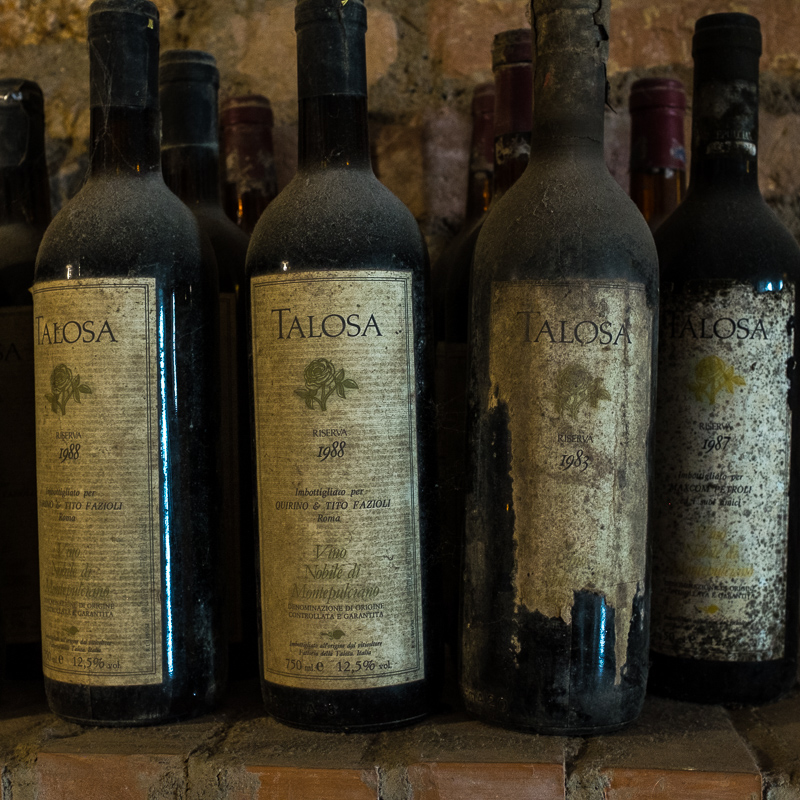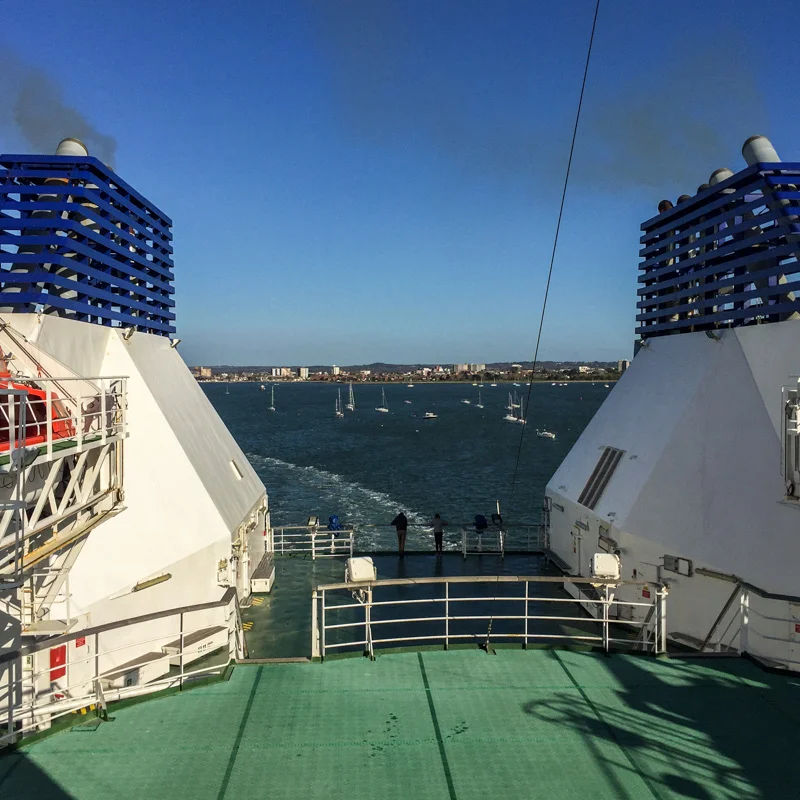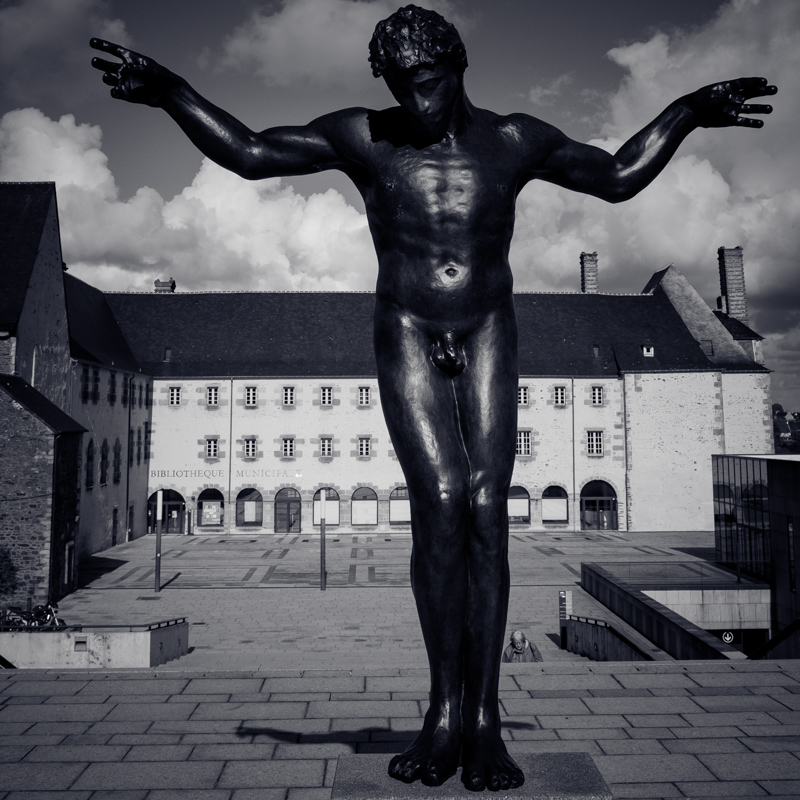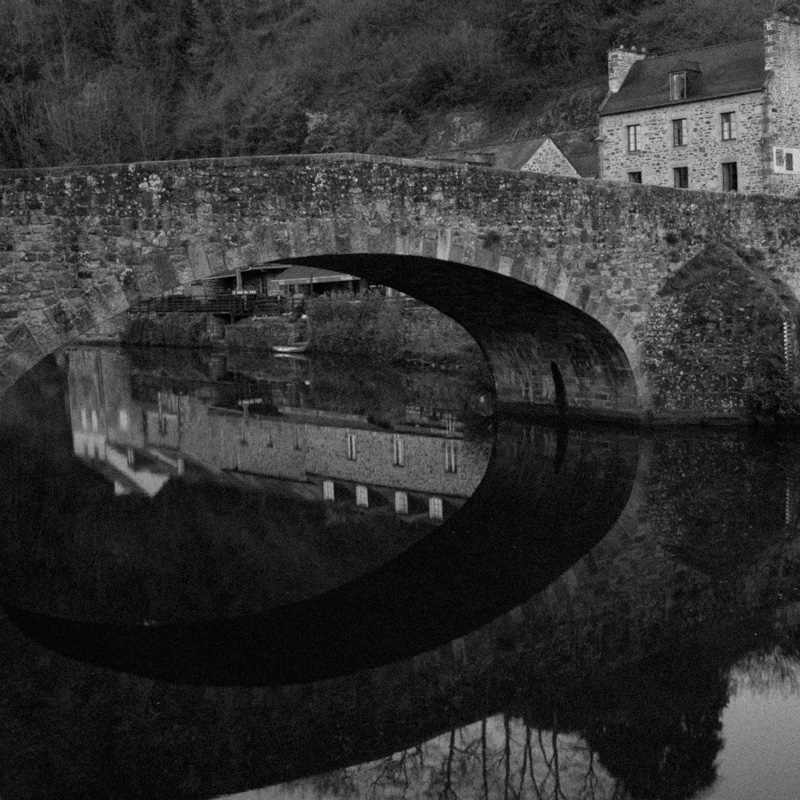Checking out Douro Valley: 48 hours in Port heaven
Being knee-deep in port grapes has been a long-held dream that finally came true. We timed our visit to the Douro Valley in Portugal to coincide with the grape harvest and an experience of a life time.
Spending 48 hours in the beautiful Douro Valley, Portugal at harvest time has to be one of the highlights of our last 5 years of travel.
"Stephen likes the finer things in life". Said by my Mum, and never forgotten by Julie. She teases me endlessly about it. Not sure how bunking down in a shared dorm or clothes shopping at the local charity shop fits with the "finer things in life". But I guess when it comes to a love affair with port, Mum may have been right.
The finer things
There may have even been a point in the time when I would have swapped one of my daughters for a case of Fonseca 1977. Just joking girls, it would have had to have been at least three cases!
So here we are at the end of September having picked up a rental car, driving the 90 minute trip from Porto airport to Pinhão, deep in the promised land for port lovers. Something extraordinary was planned for this weekend, and I couldn't wait.
Be warned the narrow valley roads are not for the faint-hearted. If you are used to 6 lane highways that run in a straight line forever, the winding hill-hugging tarmac will be a tough test of your driving and concentration. Hiring a car, however, does give you the freedom to explore the outer reaches of the valley.
We arrived late Friday afternoon and headed straight to our accommodation, Casa Dona Eufémia, in the small village of São João da Pesqueira. A quick 10-minute drive from Pinhão.
Across the road from the Casa was a tiny bar in a shed. We grabbed a couple of beers from the old lady running the bar and watched truck after truck rumble passed laden with freshly picked grapes. Every so often a minibus full of tired, sleepy pickers would be mixed in with the trucks.
We headed back into Pinhão for dinner and found the delightful Veladouro Restaurant overlooking the Douro River. A very yummy white port, tonic and mint kicked things off, followed by a fish course each then a drunken port cake for dessert, even more delicious. The finer things!
Sunset on the Douro River
Having known that treading the port grapes has been on my bucket list for years, Julie searched long and hard for a suitable experience before our travels to Portugal.
With a limited window during the harvest period and an eye on the budget, Julie reached out to several companies. One offered what we were looking for but couldn't guarantee when the day was going to happen. Then out of the blue Julie heard back and it was game on.
So Saturday morning, I awoke more excited than a kid on Christmas Day. We were heading to Quinta das Carvalhas, which sits just across the river from Pinhão for a full day harvest experience.
The Quinta is owned by Real Companhia Velha. Founded in 1756, Real Companhia Velha is the oldest winery in Portugal.
Stepping into the mahogany panelled tasting room, the finer things in life just oozed from every shelf and every corner.
Our small group of 11 worshippers (three more ladies turned up for lunch) were given a quick briefing, tossed a t-shirt and bucket along with a pair secateurs.
Jumping in the back of a small tour bus we started the climb to the very top of the vineyard some 550 metres above sea level. Halfway up, we stopped to admire the incredible view of the famous terraced valley and to get a passionate introduction to wine-producing in the Douro from the viticultural manager, Álvaro Martinho Lopes.
Continuing up the winding track to one of the upper parts of the Quinta we joined the hard-working pickers who had been busy since daybreak relieving the vines of their juicy looking grapes.
Unlike a lot of other vineyards, the pickers at Quinta das Carvalhas are not seasonal staff. They are permanent staff that are kept busy all year round. The female workers have been receiving equal for many years. No wonder there's a waiting list to work here.
After an hour of bending down to harvest the grapes, I can totally understand why most of the pickers are 5-foot nothing. My back was killing me. They must have had a snigger when they saw another group of tourists paying to do what they get paid to do.
After an hour and a half, it was time to leave the pros to it, and we headed for lunch. I would have been happy to hang with the pickers all day, but we were whisked away deeper into the valley.
We ended up in a small town called Alijó, at a Michelin recommended restaurant called Cêpa Torta. Seated next to a couple of the winemakers, we peppered them with questions over several glasses of their excellent white and red wines.
The starter of baked brie and pesto salsa was outstanding as was dessert and the wine. The main course a local meat stew according to the meat-eaters was very yummy. Our veggie option was a so-so veggie burger, but did we say there was lots of wine!!
Following lunch, we jumped back on the bus for the short journey to the grape processing plant for an insight into how the magic happens. No health and safety here, as we wandered around stepping over pipes and hugging barrels full of the latest vintage. Truck after truck rolled up and offloaded their precious cargo, some we had picked just a couple of hours ago.
Then on to the highlight of the day, if not the year, if not the decade. OK somebody was a little excited. We were taken to a small nondescript building. Inside were three massive granite lagares (akin to a large paddling pool). In the first were three members of staff with a grape juice tide mark already halfway up their legs, pounding up and down.
Steve’s new career!
With a quick hose down of our feet and legs, we climbed one by one into the middle lagar. It was filled to the brim with the red grapes that are used for port making. In many of the port vineyards, this traditional method of stomping the grapes by foot still continues. It is done this way to prevent the seeds of the grapes being crushed and adding a bitter taste to the wine.
I was the first in and last out of the lagar. This has been something that I have wanted to do since my first ever sip of port. I was going to make the most of the opportunity. With grape skins wedge between each toe and bits of stalk tickling the bottoms of my feet, I had a smile a mile wide.
At one point we had one of our team beating a drum, viticultural manager, Álvaro, playing the bagpipes and a glass of port in our hands. Pinch me, I think I'm dreaming.
To finish the day we jumped back on the bus and headed back to the Quinta for wine tasting. We were presented with three white, three reds and a port. A fantastic way to end to a fantastic day.
Starting at 10.30am and finishing just after 7.00pm, it was outstanding value for money at only €85 per person.
Do yourself a huge favour visit the Douro Valley at harvest time and get booked in for this incredible day, you won't regret it.
We spent the next two nights at Quinta Manhãs D'uoro, in the town of Provesende. Another excellent accommodation choice by Julie. The first night we tried the traditional baked cod for dinner, hmmm. It was tasty, but choc-full of bones. Now breakfast, on the other hand, was a great success, especially if you are first in the queue for the piping hot Pastel de Natas.
Sunday morning we took a drive out of Pinhão and along the river to Quinta do Panascal, home of Fonseca, one of the finest producers in the valley. I'm a massive fan of Fonseca, they produce some fantastic port.
The tour here is self-guided and starts at €10. Julie decided to chill in the courtyard in the dappled shade while I went off to explore. The audio guide takes you out of the winery and through the vines. Along the way, there are numbered points that correspond with the guide. The first of these talks about the various grapes varieties and what can grow where.
After an hour of wandering and listening, it was back to the winery for the tasting.
The young lady running the front desk while friendly but offered no depth of information to the wines that we were tasting (yes I had to share my pours with Julie). Still, it was a beautiful setting, the sun was shining, and there was a heap of activity, including stomping in one of the lagares.
Back in Pinhão, we walked the short distance to Quinta do Bonfim. Owned by the Symington Family Estates which includes the port brands Dow's, Warre's, Graham's and Cockburn's. This is the public face of one of the oldest and most respected port companies. They are the largest vineyard owner in the valley and have over 1025 hectares (1 hectare is similar in size to a football pitch) planted in grapes.
The tours and tasting start at €17, like most, it can be upgraded to include rarer older vintages. We upgraded one of us so that we would get a taste of 6 different styles and vintages in total.
We were part of an English guided tour with 10 people. Our guide was slick and well practised.
The gobsmacking moment was when we walked into the processing room. The granite lagares have been replaced with stainless steel versions. A mechanical stomper, fitted with a silicon bottom (to try and replicate the touch of the human foot) moves at glacier speed, slowly extracting the juice from the grapes. It's interesting to see, but it's not the traditional method.
The tasting room offers magnificent views of the Douro River. I could easily see us spending an afternoon here. A bottle of port on the table watching the boats cruise up and down.
Our guide gave an excellent overview of the ports that we were tasting. Unfortunately, it was over way too quickly. I did eye the table next to us which had had 2 couples tasting the top of the range ports (at €50 a tasting) They had hardly touched their pours. I'm not sure minesweeping is the done thing here, and I'm positive had I made a move towards the now empty table I would have ended up a single man.
Both Quintas that we visited today are well worth the effort and money. They are at the opposite ends of slickness and polish but offer a great insight into the region, and it's treasures.
We opted to finish our time in the valley with a 1-hour sunset cruise along the river. It was great to see the valley terraces from a different angle. You really appreciate how steep the vineyards are and how hard it is working the slopes when you are down at river level.
It had been an incredible 48 hours. I felt well and truly spoilt. The landscape alone is breathtaking and worthy of it's UNESCO World Heritage status. To be here and amongst it, all at harvest time was just mind-blowing.
Unfortunately, the sales of port have been dropping by 1% each year for the past decade. The advancement of modern methods of picking and processing is starting to take hold. Many of the Quintas are looking to these new methods and producing different types of wine.
So I, for one, will be doing all that I can to stem the decline in sales of one of the finer things in life. Delicious yummy port.
The town of Pinhão sits on the Douro River
CHECK OUT: HINTS AND INFO
Pinhão Railway Station
If driving along the narrow roads of the valley is not for you, there is another option. Jump on the train from Porto to Pinhão.
A one-way ticket is €16 and takes 2.5 hours. And if you are departing from São Bento Station, you get to see the fantastic tiled foyer.
There are some great Quintas within walking distance in Pinhão. And for those a little further afield you can use the local bus service or taxi.
We travelled; (price per person)
from Barcelona to Porto with Ryanair NZ$73 (US$46)
Porto to Manchester with Ryanair NZ$144 (US$90)
Centauro car hire NZ$52 (US$34) for 3 days
We stayed at; (price per couple per night)
Casa Dona Eufémia NZ$127 (US$84) large double room, breakfast, ensuite
Quinta Manhãs D'uoro NZ$107 (US$70) double room, breakfast, ensuite
We visited; (price per person)
Quinta do Bonfim NZ$29-$85 (US$19-US$55)
Quinta do Panascal NZ$17-NZ$59 (US$12-US$39)
Quinta das Carvalhas NZ$144 (US$95)
We ate at; (price for two)
Veladouro Restaurant - Pinhão NZ$82 (US$53) very tasty and great views
Cêpa Torte part of the harvest experience, highly recommend
Quinta Manhãs D'uoro dinner at hotel NZ$76 (US$50) 3 courses and wine
Checking out: Granada, Còrdoba & Seville - the Spanish cultural city trifecta
Looking for three Spanish cities that will trump all others in terms of cultural richness? You cannot go too far wrong with Granada, Còrdoba, and Seville. Alhambra, La Mezquita, and Seville Cathedral max out on wow factor.
If you want to place a bet on three Spanish cities that will trump all others in terms of cultural richness and wow factor you cannot go too far wrong with Granada, Còrdoba and Seville.
The bonus for these three gems is their proximity to each other. Perfect for a long weekend whistle-stop tour.
The cities are a short bus ride away from each other in the most southern part of Spain’s Andalusia region. The region is rich in history and culture. The earliest known paintings of humanity were found in caves here. The proximity to North Africa sees a huge influence of Moorish style throughout the area.
Granada
Granada’s big draw is the opportunity to wander the magnificent 13th century Alhambra. One of UNESCO’s World Heritage darlings.
The sun sets on the historic Alhambra
We stayed at The Cathedral Rooms, just a short five minute wander from the centre of town and a stone's throw from the Catedral de Granada, surprise surprise. ‘The Rooms’ were certainly aimed at the more budget conscious, but still ridiculously expensive. The squeaky bunk beds a reminder of our time on the Camino de Santiago.
We spent our first afternoon meandering the Paseo de Los Tristes (The Promenade of the Sad Ones) which runs along the Darro River. A multitude of churches and museums battle for your attention.
We found refuge from the heat in Rincón del Chapiz, a small cafe tucked away on one of the many side streets. Dinner was in the Arab district, a warren of narrow streets bursting with little shops selling antiques, food, and an assortment of Moorish style fashion.
Following dinner, we made our way to Mirador San Nicolás to watch the sunset over Alhambra. The lookout awash with tourists, hawkers, and flamingo dancers. Great people watching but not a spot for a quiet romantic evening.
The following evening we soaked up the fantastic sunset at Mirador de San Cristóbal, a little quieter for romantic types.
Having done heaps of research, Julie had booked tickets to make sure we would be one of the first through Alhambra’s heavily fortified doors. This meant getting out of bed early, a 20-minute slog up the hill in the dark to the Justice Gate, and then chilling until the queue started to form.
Turned out we were the first into this incredible complex starting with Palacios Nazaries. Skipping through the first couple of rooms quite quickly we were able to relax, take in the history and grab some photos without anybody else around. The rooms and buildings and their intricate detailing are inspiring and breathtaking. Each room seems to outshine the last. When you’re away from the crowds, you really feel like you have travelled back in time.
The first fortress at Alhambra was built in the 1st century, then left abandoned for 1,100 years until the current complex first took shape. The Christian influence started around the end of the 15th century.
Just afterwards Christopher Columbus presented at Alhambra and got the ok from the King and Queen of Spain to set out on a little sailing trip.
Today Alhambra is a series of magnificent palaces, fortresses and gardens. A mish-mash of styles from across Europe and the Middle East. Make sure to pack your walking shoes though. There’s so much to take in.
The rugged no-nonsense fortress of Alcazaba is one of the oldest parts of the complex. First built around the 9th century.
The head-spinning circular courtyard at the Palacio de Carlos V was constructed on orders of Emperor Charles and paid for from taxes on the Moors. The original architect trained alongside Michelangelo in Italy.
The dazzling multi-coloured gardens of Generalife are a pleasure to mooch around. The palace and gardens built in the early years of the 14th century. Pebbles in the mosaics coming from both rivers that run through the city. White ones from the River Darro and black ones from the River Genil.
In total, cruising Alhambra’s palaces and grounds and walking to and from our accommodation, we clocked up over 14 kilometres and 138 floors.
Get in early before the crowds start to assemble, you won’t regret it. The Justice Gate is the only way to access Alhambra before the main gates open.
The biggest disappointment of our trip to Granada? Missing out on a pilgrimage to Plaza Joe Strummer. Who knew that there was a small square named after one of Steve’s all-time musical heroes.
Córdoba
Our next stop was considered to be one of the most advanced cities in the world, back in the 11th century. A three-hour bus ride saw us deposited in Córdoba.
Arriving in the town we missed our stop, so we had a very long and very slow loop of what seemed like the entire city. Let’s just say things were a little testy by the time we made it to our accomdation.
Beside the Roman Wall is a shared apartment, but we saw little of our fellow guests during our stay. And there was no false advertising in the name. We were a hop, skip and jump to the Roman wall and into the old part of the city.
La Mezquita, also known as the Great Mosque of Córdoba, dominates the old town. The first building was believed to have been built in 784. The original mosque became a cathedral during the early part of the 13th century.
Inside the imposing wall, the Orange Garden Courtyard leads to the stunning Cathedral/Grand Mosque, a mixture of Muslim and Christian architecture and styles. The main hall has over 856 columns of various materials including marble and onyx. A dazzling display of red and white archways open up to multiple chapels, with gold lined ceilings full of religious art and imagery.
The official opening hours start at 10.00am. But if you’re up early one of the large doors swings open at 8.00am for those who which to pray. This also means that anybody wishing to enter the Cathedral can do so and save the ticket price of €10 (US$12).
The former minaret, now a bell tower, is the perfect spot to get a bird’s eye view of the Cathedral and a beautiful place to watch the sunset. It’s just €2 (US$2.50) to climb the short walk to the top of the 54-metre tower, but you do need to book a time slot.
More Moorish history can be found at the Alcázar de Los Reyes Cristianos (Real Alcàzar). This castle was built in 1328. Once you have had your fill of the many towers and rooms, there are over 50,000 square metres of beautiful gardens to explore.
Stunning gardens of Alcázar de Los Reyes Cristianos
An excellent spot for an evening stroll and some sunset photography is the Roman Bridge spanning the Guadalquivir River. Initially built in the 1st century BC and later rebuilt by the Moors in the 8th century. Today after multiple rebuilds and additions the bridge has 16 arcades and runs for 247 metres.
Golden sunset Roman Bridge across Guadalquivir River
Seville
A view of Cathedral of Saint Mary of the See from Torre del Oro
Mark and Rohit on the Camino de Santiago
Our final Spanish stop was the gorgeous city of Seville. We checked into Pensión La Montoreña and ended up with a room opposite our Kiwi buddies Rohit and Mark. These guys had just completed the Camino de Santiago. Seville was the perfect place to catch up for few days, have several glasses of vino tinto, and swap Camino stories.
Our accommodation was a short walk through winding narrow streets to the imposing Catedral de Santa Maria de la Sede (Cathedral of Saint Mary of the See), the world’s largest cathedral. Also the final resting place of Christopher Columbus. This Cathedral is vast, you almost need GPS to navigate your way around. Even large tour groups fade to nothing inside the 23,500 square metre nave.
The 105-metre bell tower is unique in that there are no steps leading up the tower, just a gentle incline that spirals around the tower. When we visited much of the bell tower was cover in tarpaulin and undergoing renovation meaning that only one side was open. Even still we had a spectacular view of a slice of the city.
Bird's eye view of Seville from catherdral bell tower
The queue for the Cathedral snakes around the building shortly after opening. But there’s a way to jump the queue. Make a quick visit to Iglesia del Salvador (Church of the Savoir) at the Plaza Salvador and buy a combo ticket. This gets you access to the Church and the Cathedral.
This wee tip can save you an hour of queuing in the Seville heat. When you get to the Cathedral go right to the turnstile at the front of the line and show your receipt.
Boom you’re in.
A wander down the promenade alongside the Guadalquivir River leads you to the Torre del Oro. Built in the 13th century this dodecagonal watch tower used to be one anchor point for a massive chain that would be used to block the river from invading forces.
For a modern slice of Seville architecture head over to the whimsical Metropol Parasol. Built-in 2005 and reported to be the world’s largest wooden structure. To me, this piece of modern art looks like a low lying cloud. You can get access to the viewing platform for just €3 (US$3.50).
Just off the Metropol Parasol, there are some neat side streets with trendy bars and second-hand shops. Great people watching opportunities.
Sunset across Seville from Metropol Parasol
The Plaza Espana is a homage to all things Spanish. A huge semi-circled plaza with looming towers at the north and south sides. The thing to do here is to wander the tiled alcoves taking photos of the regions of Spain that you have visited. A great place to hang out and chill for a couple of hours.
The sweeping Plaza Espana
Our final piece of Moorish history during our trifecta city trip was the Alcázar of Seville. The oldest Royal Palace still in use in Europe. Well, the upper floors are still used. We choose to skip the Royal apartments and focus on the older ground floor rooms, courtyards and gardens.
Walking through the Gate of the Lion you can fully understand why this complex was used for part of the filming of Lawrence of Arabia. Steve’s second favourite movie of all time, by the way.
We ambled through the cutely named, Courtyard of Dolls, Gothic Palace, Admiral’s Room, Ambassador’s Room, and Bedroom of the Moorish Kings. Before losing ourselves in the peace and quiet of the gardens.
Tranquil gardens of Seville's Alcázar
Our tour of these culturally rich cities had come to a close. Three towns offering an excellent insight into the mixture of Moorish & Christian history. Each has its unique quirks, architecture, food, and cultural diversity. Each could be a holiday destination in its own right. Mix the three together, and you have an incredible Spanish cultural experience.
So which is your favourite?
Unlike picking a trifecta, we think picking one city over another would be unfair. Our recommendation would be to take at least 10 days and visit all three. Soaking up the amazing blend of architecture and culture from this part of Spain.
CHECK OUT: HINTS AND INFO
We travelled; (price per person)
- from Barcelona to Granada with Vueling NZ$115 (US$78)
- Taxi to Barcelona airport from central plaza NZ$57 (US$38.50) huge queue for the bus even at 6.30am so jumped in a cab
- from Granada to Córdoba with ALSA Bus for NZ$25 (US$17.50)
- from Còrdoba to Seville with ALSA Bus for NZ$21 (US$14.50)
We stayed at; (price per couple)
- Granada, The Cathedral Rooms, very basic bunk bedroom NZ$82 (US$55)
- Còrdoba, Beside the Roman Wall, large double room in shared apartment NZ$41 (US$28), yes half the cost of Granada.
- Seville, Pensión La Montoreña, great location, super clean double room and with roof terrace NZ$57 (US$39)
We visited; (price per person)
- Granada, Alhambra NZ$26 (US$17.50)
- Còrdoba, La Mezquita NZ$17 (US$12) free if you visit between 8am-10am
- Còrdoba, Alcázar de Los Reyes Cristianos NZ$7 (US$5)
- Còrdoba, Bell Tower NZ$3.50 (US$2.30) need to book at desk at the bottom of the tower
- Seville, Church of the Saviour & Seville Cathedral NZ$15.50 (US$10.50)
- Seville, Cathedral Tower NZ$3.50 (US$2.30)
- Seville, Metropol Parasol NZ$5 (US$3.50)
- Seville, Real Alcàzar NZ$18 (US$12)
- Seville, Torre del Oro NZ$5 (US$3.50)
We ate at; (price for two)
- Granada, Alaguarda NZ$36 (US$24) OK, nothing to shout about
- Granada, La Vinoteca NZ$48 (US$32), great wine.
- Còrdoba, Casa Rubio NZ$71 (US$48), great roof terrace but grumpy waiter. Amazing fried aubergines with honey
- Còrdoba, Amaltea NZ$50 (US$34) good restaurant, lots of veggie options
- Seville, La Bartola NZ$65 (US$44) bit of a queue but worth the wait
- Seville, Los Coloniales NZ$36 (US$24), great atmosphere very busy
- Seville, Salt and Sugar Cafe, amazing pastries and churros
YOU MAY ALSO LIKE TO CHECK OUT
Checking Out: What to see in Barcelona in 4 days
The perfect four days trip uncovering the best things to do in Barcelona, including Gaudí’s wonders Casa Mila, Casa Batlló, and Park Güell. Not to mention the majestic Basilica Sagrada Famílía. Exploring the narrow quirky streets of the Gothic Quarter discovering hidden little gems.
We defy anybody not to fall in love with Barcelona.
Whether it’s the breathtaking scale of the Basilica Sagrada Famílía or the dreamlike Gaudí architecture of Casa Milà and Casa Batlló. The funky Park Güell or the quirky narrow streets of the Gothic Quarter. The slick modern waterfront or the mouthwatering tapas and wine. The beautiful tree-lined broad avenues or the unbridled passion of the people of Barcelona.
Passeig de Gracia Barcelona
Falling in love with this city requires almost no effort.
Walking Tour
There are so many things to do in Barcelona, but before you start, maybe think about a walking tour or two to wet your appetite.
Walking tours are a great way to see some of the more familiar sights, and many not so familiar, all with a commentary that generally comes from the heart.
We jumped on two free tours organised by Free Walking Tours Barcelona. The idea is that you tip the tour guide depending what you think the tour is worth or on how generous you’re feeling.
Our first tour was all things Antoní Gaudí. Barcelona’s most famous son, designed and built some of the world’s most iconic houses and buildings.
The walk did not include admission to the houses but did provide some excellent background on this famous architect and how his more important works came to be. We wandered up the beautiful tree lined avenue of Passeig de Gracia, stopping outside Casa Batlló and Casa Milà. The tour group then jumped on the subway and headed to Sagrada Famílía.
The following morning a second tour took us into the Gothic Quarter and introduced the history of Barcelona, from Roman times, through to the Spanish Inquisition, then onto modern day life in this fabulous city. The narrow streets of the Gothic Quarter just begged to be explored again and again.
Both of these tours started in the Placa de Catalunya. The first tour was excellent, the second, the guide lacked some ummph. You get what you pay for sometimes!
Sagrada Famílía
I don’t think anything prepares you for the gigantic scale of La Sagrada Famílía. Like giant stalagmites reaching for the sky, Sagrada Famílía rises ever upwards dwarfing the 5 storey buildings around it.
Sagrada Famílía at sunrise
Construction on this stunning church started over 136 years ago and is still underway today. Taking over from the original architect Francisco de Paula del Villar in 1883, Gaudí sprinkled his brilliance over the project until his death some 92 years ago.
There are a number of guided tour options available. We chose to just wander and soak up the beauty and magnificence without interruption. Yes, a guide would have provided some detail on the history and scale of this enormous building. But sometimes you just have to trust your own eyes. There’s incredible detail in every nook and cranny. No surface, door way, window or ceiling has been left untouched by the Gaudí magic.
amazing sculptures that form part of Sagrada Famílía
Stepping inside the basilica towards the end of the day you are bathed in a kaleidoscope of colour. The setting sun cascading through the modern stain glass windows lightning up the central part of the church.
The basic entry ticket price is €15. One thing you do need to do though is book ahead. There are time slots for entry into the church, and these are strictly enforced.
Gaudí Houses
Before he devoted the rest of his life to La Sagrada Famílía, Antoni Gaudí made his name designing dreamlike homes for the wealthy of Barcelona. We visited two of those homes, Casa Batlló and Casa Milà.
Casa Batlló
Breathtaking Casa Batllo
Redesigned in 1904 Casa Batlló is one of Gaudí great masterpieces, with it's sleeping (or slain) dragon roof and dragon staircase. Not one to embrace a straight line, Gaudí’s Casa Batlló is all curved walls and intricate door frames; door handles that beg to be caressed, a central air vent come light source, inspired by the brilliant blue waters of the Mediterranean. No detail was considered too small for the Gaudí touch.
On the Noble floor, windows that span the width of the room may have been the inspiration for Captain Nemo’s submarine in the movie adaptation of 20,000 Leagues Under the Sea.
Room wide windows offer a great view
Throughout the home there are countless examples of nature-inspired touches, from door handles to bone like balcony facades.
Smartphone users will also get a treat from augmented reality clips that are available in many of the rooms. Pointing your phone to a spot on the floor and opening up the Casa Batlló smartguide app brings to life some the classic Gaudí masterpieces.
Casa Milà (La Pedrera)
Another stunning Gaudí designed house, Case Milà
The star attraction of La Pedrera is the rooftop. Here the air vents stand proud like an animated Egyptian army guarding the treasures below. Inside the attic, you are transported inside the skeleton of a snake. Gaudí often took inspiration from the natural world.
Incredible Roof Top of Casa Mila
Only small parts of the building are open to the public as the majority of the building is used for apartments (some still used by families that have live in Casa Milá for over 70 years), administration offices, a performing arts centre and of course the gift shop on the ground floor.
Gothic Quarter
Who doesn’t like a good wander through narrow streets lined with tempting storefronts, (Julie’s sister Tracey is who, but that’s another story) The tourist promenade, La Rambla, slices through the middle of the Gothic Quarter. Either side a maze of pinched, twisting streets. Museums, cafes, food markets, unique fashion stores, workshops and a cathedral waiting for budding explorers.
The Cathedral is not quite what it seems at first sight. It had a bit of a Vera Duckworth (Coronation Street fans will know) make over in the late 1800’s when a gothic facade was built over the original dull looking exterior.
The food market Mercado de La Boqueria is a bit of destination for food-loving tourists. We found it to be very meat heavy and a little pricey. So wandering out the back of the market we stumbled across a beautiful little tapas bar, where lunch was half the price of anything on offer in the market.
On the museum front, the Gothic Quarter has something for just about everybody’s taste. Museu Eròtic titillates with erotic art from ancient times to modern day. One of Spain’s favourite artists is showcased at the Picasso Museum. For the sweet tooth, Museu de la Xocolata offers up tempting treats, including chocolate making workshops. Then there is The Hash Marihuana & Hemp Museum, a history of the use of hemp and cannabis. Just a small taste of the many museums in this area.
Park Güell
Perched on the side of Carmell Hill facing the city, the Park offers a spectacular view of Barcelona. It’s here that you get a real sense of the scale of the Sagrada Famílía as is dwarfs all its nearby neighbours. We caught a local bus to the bottom of Carmel Hill then slogged our way up a large number of steps until we reached the park entrance.
Eusebi Güell, a Spanish entrepreneur, commissioned Gaudí to design the park. Opened in 1926 the main entrance to the park is like a cross between Hansel & Gretel meets Willy Wonka. What was Gaudí smoking?
Roadways, paths and viaducts are all made from local stone. Like a giant wave about to slam into a beach, the sloping terrace walls providing support for the viaduct above.
The main terrace with its sea serpent theme bench is a perfect spot to watch the sunset over this vibrant city. Almost as captivating is watching the various poses, not of those being photographed against the dramatic backdrop, but the stance of those with the camera in their hands. Oh what fun.
Again you have to book tickets in advance for the park and are allocated a time slot for entrance. Once inside you are free to spend as much time as you like wandering the park.
People Power
We managed to time our visit to Barcelona just as major demonstrations took place over the right to have a referendum on independence for the Catalonia region.
Tens of thousands took to the streets to protest against the Spanish Government making the vote illegal. While we were there, the demonstrations were peaceful, with young and old wrapped in the Catalonia flag, taking to the streets together.
We walked back to our accommodation post demonstration accompanied by a cacophony of noise from car horns and bike bells to the sound of clanking pans echoing through the tree-lined avenues. Quite a surreal experience.
Sadly, several days later things weren’t entirely as peaceful as the Spanish Police raided several local Government buildings and arrested some of the region’s civic leaders.
Hasta la vista Barcelona
Since hosting the Summer Olympics in 1992, Barcelona has dragged its self away from the gritty industrial city it once was into one of the top must visit destinations in the world.
Four days in this incredibly vibrant city meant that we only just managed to scratch the surface. There’re so many more narrow streets, museums, Gaudí houses and tapas bars to be explored. Enough to tempt visitors back again and again.
Barcelona is not cheap by any stretch, but it’s well worth the investment. We are not great fans of sprawling cities, but Barcelona certainly won our hearts. Our visit enhanced by the passion and verve of the people who love their Catalonian city.
Barcelona jumps into our top 5 all time favourtie cities. Go check it out for yourself.
CHECK OUT - HINTS AND INFO
We flew from Bologna to Barcelona with Ryan Air for just NZ$76 (US$53) each.
We stayed at Eddy’s Rooms, Situated in a beautiful building, just a 10-minute walk to Placa de Catalunya, Gaudí houses and Sagrada Famílía. Double Room with shared bathroom - NZ$121 (US$84) per night, breakfast included.
We visited. Combined ticket for Sagrada Famílía, Casa Milà and Casa Batlló - NZ$102 (US$70) each. Park Güell - NZ$15 (US$10) each
We ate at Vegetalia, great location in the Gothic Quarter by Basilica of Santa Maria del Mar, tasty veggie meal and a good price, NZ$42 (US$30) washed down by a jug of Sangria. Zed Tapas, just a short walk from Sagrada Famílía, very friendly, great food, good price, NZ$30 (US$20)
YOU MAY ALSO LIKE TO CHECK OUT
Croatia, one Big Movie Set
Sampling some of the most beautiful places to visit in Croatia, Dubrovnik, Split, Zadar & Plitvice Lakes. It's easy to see why it makes the cut as a Game of Thrones set. Stunning.
September 2016
Croatia was our first brand new country in 7 months and we had high expectations. Our overnight ferry from Bari docked in Dubrovnik early morning just as the sun was rising.
If you are a Game of Thrones (GoT) fan then Dubrovnik is amazing, if you are not a GoT fan then Dubrovnik is still amazing. A real wow moment from first sight. It looks like one big movie set. In fact it is regularly swamped by film crews from around the world.
the old city skyline from the wall
We were excited to tackle the old city wall. In places, the wall is up to six metres thick. Tunnels and fortresses provided excellent protection for the locals in centuries past. Stopping along the way for photos, it took the best part of two hours to complete the two kilometre route. Stupendous 360-degree views of the old city and the sparkling blue waters of the Adriatic Sea caught our eye at every turn. There is very little in the way of shade, so first thing or late afternoon is a great time to venture out.
The city may have provided a safe haven in days of old but it was no match for modern warfare. The Serbians laid siege to Dubrovnik for 7 months during the Homeland War. Much of the skyline is now new rooftops repaired under the guidelines of UNESCO.
In the afternoon we opted for a guided tour through the old town. Our guide Heni provided some detailed information about the history of the city as well as some more up to date info for example what was filmed where. Sadly, the old city is now inhabited solely by tourists, the local population driven out by rising rents. The old workshops now replaced with souvenir shops. Cruise ships and the revenue they generate has replaced the ship building that once thrived here. Despite the changes, this is still a fascinating city.
There is no shortage of tour guides. Picking one is a little like shooting apples in a barrel. Most are stationed just outside the main gate. This is also where the tour buses drop off and can be a little hectic at times.
Julie has put her acting career on the back burner of late. When we were last in Richmond Park, London she refused to play the part of Fenton. And in Dubrovnik, she refused to reenact the 'walk of shame' (from GoT). I can only apologize dear readers.
We did manage to squeeze in a wine tasting of Croatian wines at Malvasija wine bar along with dinner at the highly recommended restaurant, Azur. Seated down a side alley, a great spot to escape the craziness of the main streets.
Just outside of Dubrovnik is the Trsteno Arboretum which dates back to the 15th century and has also been used as a GoT location. We spent a couple of hours exploring the gardens and the cute harbour before heading north for Split.
The road north hugs the jagged and stunning coastline before dipping into the 'Valley of Life'. Here the Neretva River feeds a diverse ecological system. Lush green fields, row after row of fruit trees, all flourishing in this Garden of Eden. Road side stalls offer a taster of the amazing fruit and vegetables. We grabbed some lunch and found a quiet spot by the Baćina Lakes to chill.
Split is grittier than it’s more flamboyant Southern sister. Despite being the second largest city in Croatia, it is pretty easy to get around. Covering the old town takes less than 20 minutes.
Split from the St Domnius Bell Tower
Much of the old city was once part of the Diocletian Palace. Built at the start of the 4th century it was more of a garrison than a single building. We stuck our noses in the Temple of Jupiter before heading to the underground halls of the Palace. We climbed to the top of the 60 meter tall St. Domnius bell tower. The open sides allowing the gusting wind to blow through adding to the excitement of the climb. Late afternoon we headed up the nearby Marjan Hill to get a view of the city at sunset. We liked Split a lot.
From Split we drove to Zadar before heading inland and on to Plitvice Lakes National Park. Zadar was a bit of a disappointment. Sprawling and heavy with tourists. The historic centre lacked the charm of Dubrovnik or the grit of Split. The Sea Organ, a major draw was somewhat oversold on Tripadvisor.
If Zadar was a disappointment then Plitvice was a real treasure. The whole region looks like a Swiss chocolate box, a definite alpine look and feel.
The Plitvice Lakes National Park is a series of lakes with tiered waterfalls tumbling from one to another. Scenic walks take you from waterfall to waterfall, rustic boardwalks brimming with photo opportunities.
We loaded up our backpacks so they weighed the same as we would be carrying on the Camino de Santiago, time for a trial hike. Seven hours later, having walked 21 kilometres we collapsed in a bar, the first beer didn't even touch the sides.
We went back for a second go the following day. This time arriving at the park even before the staff. We had the whole place to ourselves for the best part of two hours. Then the coaches started arriving, with an army of visitors pouring off each bus, often inappropriately dressed. We both performed our good deeds for the day. Julie rescued a fish that had jumped onto a boardwalk. I helped several damsels in distress who didn't want to get their dainty shoes wet in the large puddles that swamped some of the trails. Somebody had to do it.
In just under a week we got to sample just a small but exciting part of Croatia. It is a beautiful country that just begs for you to return and explore more, particularly the 718 islands.
Croatia photo gallery, click here.
Dubrovnik city wall at dusk
Naples vs Venice
Ladies and Gentlemen, in the blue corner we have the home of pizza, Naples and in the red corner, from city of water, Venice. Welcome to this middle weight bout.
Our middle weight bout offers up two cities steeped in history, one under the constant threat of being buried under layers of lava. The other taking measures to keep the sea from swamping its uniqueness. Both cities were on our ‘must visit whilst in Italy’ list, but which one won our hearts?
After finishing our second Italian house sit we headed south for the Amalfi Coast and Naples. Being in the region for three days we were determined to get a taste of Italy’s third largest city. In the end, we managed to devour just a tiny slice of the home of pizza.
On the outskirts of Naples is the ancient Roman town of Herculaneum. Buried in 79AD during the eruption of Mount Vesuvius. Herculaneum is a smaller and quieter version of Pompeii. Yet in its day it was wealthier than its famous neighbour. The eruption preserved many of the fine homes with their mosaic art. Arriving as the complex opened we literally had the run of the site before the tour buses arrived. Your first sight upon entering Herculaneum is a small row of boat sheds. These were once on the shoreline but are now several kilometers from the sea. It’s here that some of the inhabitants sheltered from the encroaching lava. Unfortunately nowhere was safe and now the skeletons provide a grisly reminder of the power of mother nature. The whole town is a fascinating insight into life in Roman times.
Back in Naples, the National Archaeological Museum with exhibits from Pompeii and Herculaneum is viewed as one of the world’s most important archaeological collections. Room after room filled with gigantic statues, mosaic art and other Roman artefacts. Also hidden away is the Secret Cabinet Room. Home to a collection of Roman erotic art rescued from the buried towns. Not one for the faint-hearted, clearly the Romans had a pretty good opinion of themselves, well the men anyway.
We ducked and dived through the gritty yet captivating streets of the Spanish Quarter, crisscrossing the Spaccanapoli (the road that splits Naples). With alleyways, hidden churches and imposing five-storey terraced apartment blocks hemming you in. Everyday life grinding away on all sides, washing strewn from balconies, the air heavy with the smell of food. Late afternoon we found a bar to sit and watch life go by, including the drama of one guy being nudged off his scooter. Taking his cues from Italian football, he laid on the floor for 5 minutes ‘dying’ before Julie waded in and lifted up the scooter. Not even giving her a second glance, he waved his arms at the offending car then continued on his way.
After a long but enjoyable day, we found our way back to the train station where we had left the car. A nearby parking meter still clutching our one and only credit card tightly. One of us thought we could pay with the card; the slot was only for the local prepaid parking cards, oops.
Draw a diagonal line from Naples through the middle of Italy at the other end you will find Venice. We arrived at our base of Mogliano Veneto after several hours in the car, both of us feeling a little cranky. Our AirBnB was a 25-minute train ride into Venice and no sooner had we dropped our bags we went off to explore the city of water.
It didn’t help our mood that our first choice for dinner was fully booked. There’s nothing worse than wandering aimlessly when you are both hangry (hungry and angry). We did eventually find somewhere that wasn’t budget-busting, not easy to do in Venice.
Having found some sustenance we spent our first evening traversing the canals via the myriad of bridges, exploring quiet alleyways and enjoying the architecture.
The following day we jumped on the Vaporetto (water taxi) and cruised the Grand Canal. Being quick off the mark and grabbing a spot by the railing, we got the best views. Maybe not as romantic but certainly cheaper than the €80 plus gondola rides. Looking back, I don’t think we even thought about the lack of cars in the water city. What did surprise us was the choppiness of the water. The equivalent of a pot-holed filled road in the back of beyond.
We caught a ferry over to the ‘colouring book’ island of Burano. A destination that we highly recommend. This small island can be covered in a couple of hours, leaving plenty of time for a lazy lunch. Most of the houses painted in a rainbow of colours. The ferry ride back was jammed to the rafters. Waves of tourists poured on board for the 40-minute ride back to Venice.
At Piazza San Marco (St. Mark’s Square) we arrived too late in the day to visit St Mark’s Basilica, but we did watch the sunset from the Campanile. Despite the thronging hoards in the square below, the bell tower was pretty empty. Mind you the ear-piercing sound of the bells may have had something to do with it. The Campanile provides stunning views across the top of Venice and out to the islands such as San Giorgio Maggiore. From this vantage point, cruise boats drift like toy boats down the outer canal and out to sea.
Wandering back towards the train station, we came across a marvellous little bar called Il Santo Bevitore in the Cannaregio district. Listed as one of the top craft beer bars in Venice it had excellent tasting beer and delicious bruschetta. Just what these weary travellers needed.
So there you have it, just twelve hours in each city. And the winner of our middleweight bout is…drum roll, please…. buggered if we know. We loved both of them. Naples is gritty and steeped in history. Venice, well it’s Venice for heaven sake. If handed a ticket to just one of these crazy cities, our choice would have to be Venice, we feel there is more to discover, while the other slices of Naples would taste pretty much the same. Which is your favourite?
Next Up: Final bout Amalfi Coast vs Cinque Terre, battle of the coastal icons
Heaps more photos on our gallery page Naples vs Venice
Rome vs Florence
We pitch Rome against Florence. The Sistine Chapel vs Michelangelo’s David, the Ponte Vecchio vs the Colosseum, the Vatican Museum vs the Uffizi Gallery. Who will win?
How do these two heavyweight icons of Italian history and culture measure up against each other? Ding ding, let the fight begin.
With our house sitting commitments, we limited ourselves to 24 hours in each city. To maximize our time in Rome, we choose to follow several self-guided walking tours from the website rometoolkit. These are easy to download to your phone.
We started at the throbbing mass that hangs out at the Trevi Fountain. With a little patience, you can capture a photo or two that doesn’t include the selfie-snapping hoards. We then wove our way to the Pantheon and onto Piazza Navone. The neat thing about the Pantheon is that it’s free of charge, so stepping inside to admire this architectural marvel is a no-brainer. The Pantheon is still in use today as a church, and it is the last resting place of the Raphael, amongst others.
High above Rome, The Lighthouse of Manfredi and the surrounding area provide a sweeping vista of this great city. Our route down took in the Fontana dell Acqua Paola, almost as impressive as the Trevi Fountain but much quieter. We then descended into trendy Trastevere with its narrow cobbled streets lined with restaurants and bars. It turns out, one of the most popular eateries is a small takeaway serving toasted sandwiches as big as doors.
With Julie heading to the airport for an early morning start, I wandered over to St Peter’s Square and St Peter’s Basilica. Arriving not long after opening, it was super quiet. I was in the minority who prefer sightseeing over breakfast. My jaw dropped as I stepped inside. The craftsmanship and sheer size are mind-blowing.
Having drooled my way around the cathedral, I paid the fee to visit the cupola (top of the dome). You can take the cheap option and walk all the way up or for an extra couple of euros you can take a lift partway. Guess which option this lazy boy took? Again I had the run of the dome. Later in the morning, the queues to enter the basilica and dome stretched all the way around St Peter’s Square.
Next stop was the Vatican Museum, home of the Sistine Chapel. It felt as if the whole of Rome was waiting to get inside. The trick here is to book your tickets online. That way, you get to walk past all the melting tourists with a smirk on your face. Inside it is chaos. The narrow corridors are lined with incredible artwork, the ornate ceilings a draw for the gawking visitors.
To survive this visual and bodily overload, I made a bee-line for the Sistine Chapel. I rushed through several rooms that were bursting at the seams with art and tourists before eventually finding my goal. The trick here is to be patient and wait for a ringside seat against the side walls to become available. Then you can relax and admire the beautiful artwork that floats high above you. Also, entertaining is watching the attendants bouncing through the crowd like pinballs to stop visitors from taking photos. If you are sneaky, you can capture quite a bit without being noticed.
Sneeky Picture of the Sistine Chapel, Vatican Museum, Rome
Julie’s visit to Rome with her Mum and sister Tracey was a little more leisurely. They took in pretty much the same sites with the addition of a wander around the litter-strewn streets outside of the Colosseum. They also managed to fall into the trap of visiting a restaurant for lunch that didn’t display any pricing, rookie mistake that saw little change from €100.
The success of Rome as a tourist destination also has its downside, noise, crowds and litter. For an old-timer, it certainly packs a punch but is showing signs of wear and tear.
Onto Florence, we were one of the first through the doors when the Accademia Gallery opened for our visit to see Michelangelo’s David. This Goliath of a masterpiece stands 5.16 meters tall (almost 17 foot). The sheer size and brilliance is truly captivating. There are other pieces of art in this small gallery, but all eyes are on David. The statue was initially placed in Piazza della Signoria but moved to the Accademia to protect it from the elements and most likely tourists with little chisels.
The Uffizi Gallery should be on everybody’s hit list of things to do in Florence. The gallery is on the top floor of a large oblong-shaped building built in the 16th century. It is home to works from great artists such as Botticelli, Caravaggio, Leonardo da Vinci, Michelangelo, Raphael and many more. We chose to wander at our own speed and didn’t bother with the audio guide.
Uffizi Gallery Courtyard, Florence
With the culture glass now full to over-flowing, it was time for some fresh air before our time slot to climb the beautiful Giotto Campanile (bell tower). Four hundred and fourteen steps up a claustrophobia-inducing stairwell. At the top, you are presented with a breathtaking 360-degree view of Florence.
The restaurants and cafes in the Piazza di San Giovanni, where you find the Cathedral of Santa Maria dei Fiori (Florence Cathedral), charge like wounded bulls. Stepping back a block you will find a variety of reasonably priced cafes and bars.
It appears that the craftsmanship and creativity were poured into the outside of the Cathedral of Santa Maria dei Fiori, because the inside is as hollow as an Easter egg. Given that we had already climbed to the top of the bell tower we skipped the opportunity to ascend the Duomo.
Cathedral of Santa Maria dei Fiori, Florence
The nearby Baptistry packs a surprising punch. The octagonal building dates back to the 12th century. Inside all heads turn upwards to the magnificent and at times morbid mosaic ceiling.
Mosiac ceiling of The Baptistry, Rome
Zig-zagging through town, we made our way up the Poggi Ramps (stairway) to Piazzale Michelangelo for more postcard inspired views of Florence. Along the way, Julie started her photo collection of traffic signs that have been skillfully and humorously defaced by the French artist Clet.
Postcard view of Florence from Piazzale Michelangelo
Wandering back along the banks of the Arno River before crossing the Ponte Vecchio (Old Bridge) the number one landmark in Florence, The bridge dates back to the 14th century and was once lined with butchers shops. These are long gone and replaced with jewellery shops. The swoosh of the meat cleaver replaced with the swish of credit cards. The Ponte Vecchio is the only bridge to survive the German withdraw from Florence during WWII, phew.
Ponte Vecchio at Night
So who wins out in our Rome vs Florence rumble. In our minds, Rome is a big massive lumbering bruiser, with Florence the leaner and quicker fighter.
Each city has a long list of must-see sights. The crowds in Rome were a big negative, especially inside the Vatican Museum. Like faded tattoos, the graffiti and litter can sometimes be hard to look passed. Florence, a former capital city of Italy, is also a big draw for tourists but it seemed cleaner, calmer and more relaxed.
Walking around Florence is easy, as you would expect being a tenth the size of Rome. That said the metro in Rome can get you to most of the significant locations. You certainly would need double the amount of time to do justice to all that Rome has to offer compared to Florence. But does quantity win out over quality?
So our winner, with a majority point decision (drum roll please)……… is Florence. Leave us a comment with your winner.There are heaps more photos on our Rome and Florence gallery pages
Next bout, middleweight contest, Venice vs Naples
Day Tripper: 19 Beautiful Hilltop Towns in Umbria, Tuscany & Le Marche
From hilltop to hilltop, village to village, we take in some of the most gorgeous locations in Italy
May to September 2016
One of the highlights of our time in Italy was visiting gorgeous towns and villages. Many of these are perched high on a hill and most are surrounded by a wall with ornate entrance ways. Sampling what each has to offer, sitting and watching life unfold in a very simple but purposeful way. As you may know, Italy is a series of regions and provinces, each very different from the next. The same applies to the towns and villages in each of those regions. Each incredibly proud of their heritage and culture, fearless in their demonstration of loyalty to their little patch. This kind of passion is what helps make Italy so special.
Tolentino - Marche. Tolentino was the closest big-ish town to our base in San Ginesio. Not much to look at on the outside but with some hidden gems. With a population close to 20,000 it’s more of a working town than a tourist destination. Even still the narrow streets, houses with their rat look shutters, weekly market and San Nicola Basilica make Tolentino a stop off if you are in the area. Market day brings an extra buzz, it’s a great place to grab a coffee and do some people watching.
Ascoli Piceno - Marche. Sixty kilometres south of San Ginesio through winding countryside is Ascoli Piceno. One of the big attractions being the Piazza del Popolo (Square of the People). Surrounded on all sides by buildings made of the local marble (travertino). We headed to Ascoli for the antique market but alas it was non existent, on this day at least. We did find a great spot for lunch, De Gustaria is perfectly situated to watch the world go by and served very tasty fare.
Just outside of Ascoli Piceno is the hilltop castle and hamlet of Castel Trosino. Sitting high above ancient trade routes, the castle now looks like a wonderful walled retirement village, the only evidence of life being the sounds of opera drifting across the roof tops.
Loreto - Marche. The walled town of Loreto is one of our favourites in the Marche region. We stopped here after a failed attempt at wandering around Ancona. Closed to all but essential traffic the town sits high above the surrounding countryside and offers stunning views out to the coast. Loreto is a tourist town and also a Catholic pilgrim destination with the Basilica della Santa Casa the big draw. The basilica was built over the Virgin Mary's home which somehow found its way to this Italian hilltop. Like many churches in Italy the dress code for women is somewhat stricter than men. Thankfully wraps available at the entrance meant that Julie was able to cover her shoulders and step inside this very impressive and ornate building.
Castelluccio - Umbria. With a permanent population of 8, the town itself was not the draw here but the surrounding valleys and plains. Castelluccio is well known for its excellent lentils. Our first visit was to tackle a hike through the sea of yellow wildflowers on the valley floor. We then brought Julie’s Mum and sister for a visit. Our final visit took place when the lentil fields were blooming a swath of purple, blues and reds. The Feast of the Fiorita (flowering) takes place at the end of June. We didn't make the activities but rocked up a couple of days later. The visible signs of the festival still in place. The most obvious being the blast of colour as you drive from one side of the valley to the other.
Calderola - Marche Just a hop skip and jump away from our first house sit, this small town had one big attraction. It wasn’t the Castello Pallotta, a huge castle that sits amongst the shops and houses of this quaint town. We didn’t get to visit the inside of the castle which is supposed to be worth a look, next time. The big draw was the taste sensations on offer at the local gelateria. After extensive research, the Gelateria da Save is by far the best we came across during our four months in Italy. The strawberry cheesecake with its biscuit crumb was a flavour explosion. Closely followed by the bacio (kiss) a hazelnut and creamy chocolate heaven. Mix the two together and it’s otherworldly.
Cortona - Tuscany Cortona is very much a tourist town sitting aloft a hill overlooking Tuscany and out to Lake Trasimeno. It’s medieval architecture a pull for waves of tourists. Legend has it that the town was established by Crano son of Noah. The Palazzo Comunale (town hall) stands proud overlooking the Piazza Garibaldi. The price of drinks and food reflect the opportunity the tourists offer the locals. Having said that we did chill in the square one night getting Steve’s Mum tipsy on cocktails after visiting the local street food market.
Montepulciano & Pienza - Tuscany One of the highlights of Tuscany is the wine and cheese twins, Montepulciano and Pienza. Montepulciano is home to the delicious Vino Nobile red wine. The main narrow street stretches for 1.5 kilometres and it’s here you find wine houses steeped in history offering tastings. Below the tasting houses are dark damp caverns with row after row of gigantic barrels, along with racks of bottles covered in dust from decades long gone. I would be very happy to be locked down here and the key thrown away.
Pienza was rebuilt in the 15th century by Pope Pius II and is a World heritage site. The town was built as a summer getaway and the ideal renaissance town. Pienza is home to one of Italy’s most tasty cheeses, Pecorino. Strong aromas pull you into the lair of the cheese sellers on every corner. Sitting at almost 500 metres above sea level the town has sweeping views of the Val d'Orcia.
Spoleto - Umbria Standing 80 metres high and 230 metres long the Ponte delle Torri (Bridge of Towers) is an amazing site. It forms part of the ‘Gira de Condotti' a walking trail of approx 60 minutes that takes in the ancient viaduct, surrounding hillsides and woodlands, eventually coming out at the bottom of the town. Getting back into the centre is easy with the aid of a network of escalators. The Cathedral of Santa Maria dell'Assunta and the Rocca Albornoziana are a must visit.
Assisi - Umbria The birthplace of St Francis of Assisi is just a stone's throw from Spoleto. The twisting narrow streets reveal a collection of Romanesque architecture. The Rocca Maggiore (castle) lords it over all below. We dragged Mum up to the castle and before you knew it she had climbed to each of the main towers, mind you we nearly had to carry her back down. As well as the castle the Papal Basilica of Saint Francis of Assisi dominates the skyline. The Temple of Minerva dates back to roman times and there are also the ruins of a roman amphitheatre.
Just below Assisi is the impressive looking Santa Maria degli Angeli e dei Martiri. A cathedral that looks very grand on the outside and dominates your view. Stepping inside is somewhat of a anti-climax.
Worth a mention….
Amandola - Marche a majestic gate welcomes you into this small town, we had dinner a couple of times at Gusteau. Another fab gelato stop off.
Ancona- Marche major ferry and sea port on the Adriatic coast, close to airport the cathedral is worth a look.
Gubbio - Umbria the remains of a Roman theatre, the Funivia Colle Eletto carries you in a bucket to the top of Mount Ingino. Also, a venue for some classic car hill climb races.
Calmurano - Marche small town of 1200 that plays host to an International Buskers Festival, lots of bars and food stands, great vibe.
Montone - Umbria a super cute hilltop medieval village, closed off to cars, hosts an international film festival each year.
Monteriggoni - Tuscany another medieval town that looks like a child's toy castle from a distance.
Arezzo - Tuscany large monthly antique market in the Piazza Grande, much bigger and prettier than expected, old fortress now art gallery.
San Gimignano - Tuscany famous for its towers, of which 14 are still standing, and the romanesque and gothic and architecture.
Perugia - Umbria capital city of Umbria, Bladerunner style monorail whisks visitors into the centre, explore the underground catacombs of Rocca Paolina.
We have been very fortunate with our time in Italy to be able to sample a good slice of what is available in this country rich in tradition, passion, food and drink. Italian small town life is very simple and you do wonder what it will be like in several decades time. Will the young of today still have the same commitment and passion for their home towns? Or will the lure of the big cities, job opportunities and bright lights see many of the towns we visited become hollow tourist attractions?
There are a heap more photos on our gallery page
Next Up Rome, Florence & Venice
P.S. A number of towns that we drove through were badly affected by the earthquake that struck on the 24th August 2016 killing 297. Our condolences for all those affected.
French Delight: Love at First Sight in Delightful Dinan
With Dinan it was love at first sight. Picture perfect cobbled streets with quaint half-timbered houses. And Saint Malo and Mont St Michel just a short drive away.
Late April 2016
We have to be honest and say that France did not figure high in our must visit list. When it came to planning our travels through Europe I was all for getting through France as quick as possible. That’s before Julie found a gem of a place.
A quick two and half hour drive from the port of Cherbourg, is the beautiful medieval town of Dinan. Situated above the River Rance and full of cobbled narrow streets, Dinan was home for three nights. In fact our sat nav had us drive up a narrow ‘residents only’ street, trying hard not to scatter the meandering tourists.
The River Rance and part of the old wall of Dinan
Our accommodation was a very cute one bedroomed apartment off the Rue Jerzual, a great location to explore both the old and new parts of town.
A day’s drive through Normandy saw us visit Saint Malo and Mont St Michel. Saint Malo was another surprise. A beautiful picturesque port with a walled centre. Tourists flowed everywhere but the city still maintains its charm especially inside the walls.
Mont St Michel on the other hand was a major disappointment. Maybe our expectations were set way too high from seeing stunning sunset images of the Mont. Maybe it was the grey overcast day. Maybe it was just tiredness from a long day’s driving. Maybe it was the scaffolding that shrouded the top spoiling photos. Maybe it was the Disney like feel to this ancient commune. The Mont is best viewed from a distance unless you like tacky Chinese made souvenirs and basic fare at over priced restaurants.
The Mont complete with scaffolding
Our next stop was Orléans to catch up with fellow travel buddies Yannick, Prisca and their gorgeous daughter Maëwenn. We met these guys two years ago in Thailand and then again as they traveled through NZ. Prisca gave us a brief tour of the historic centre complete with Loire riverside walk and a stop at the imposing cathedral. An enjoyable dinner followed.
Fellow travel buddies
From Orléans we headed to Begnins in Switzerland to stay with an old work colleague Dave Cockle, his wife Susanne and Sam the dog for a couple of nights. They have an architecturally unique home overlooking Lake Geneva. The afternoon we arrived was beautiful and sunny with views all the way across to Geneva. In fact we could make out the 140 metre high Jet d'Eau. The following day the clouds descended and the lake disappeared completely
Our exit through to Italy took us through the town of Grand St Bernard. Here the snow started to come down in ginormous clumps. Please not another white knuckled ride over a snow covered pass. On this occasion the pass was closed but the Grand St Bernard Tunnel was open. We entered the tunnel and left the snow blanketed landscape behind, exiting to bright sunshine in Italy.
Our time in France was short and sweet and surprisingly good. Next time we will stay longer, exploring the historic towns and supping up all the Bordeaux wine region has to offer.



























